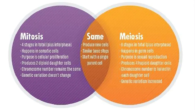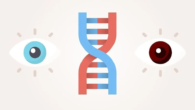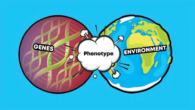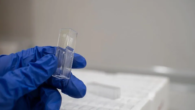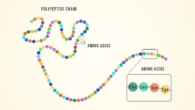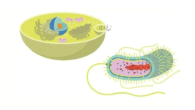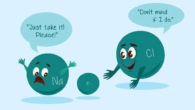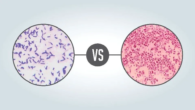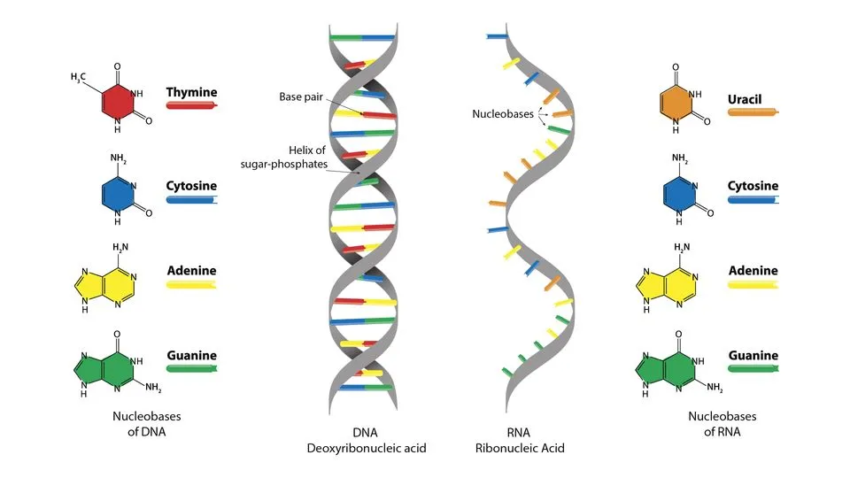
DNA and RNA: 5 Key Differences and How They Compare
Deoxyribonucleic acid (DNA) and ribonucleic acid (RNA) are two of the most important molecules in cell biology. They store and read genetic material, which is what life is based on. Along with being straight polymers made up of sugars, phosphates, and bases, they are not the same in some important ways1. Because of these differences, the two molecules can work together and do their important jobs. Here are five main ways that DNA and RNA are different. We put these two nucleic acids next to each other to see how they are different.
DNA and RNA: A Chart to Compare Them
| Comparison | DNA | RNA |
| Full Name | Deoxyribonucleic Acid | Ribonucleic Acid |
| Function | DNA replicates and stores genetic information. It is a blueprint for all genetic information contained within an organism. | RNA converts the genetic information contained within DNA to a format used to build proteins, and then moves it to ribosomal protein factories. |
| Structure | RNA contains just one strand while being made up of nucleotides. RNA strands are shorter than DNA strands. RNA sometimes forms a secondary double helix structure, but only intermittently. | |
| Length | DNA is a much longer polymer than RNA. A chromosome, for example, is a single, long DNA molecule, which would be several centimetres in length when unraveled. | RNA molecules are variable in length, but much shorter than long DNA polymers. A large RNA molecule might only be a few thousand base pairs long. |
| Sugar | The sugar in DNA is deoxyribose, which contains one less hydroxyl group than RNA’s ribose. | RNA contains ribose sugar molecules, without the hydroxyl modifications of deoxyribose. |
| Bases | The bases in DNA are Adenine (‘A’), Thymine (‘T’), Guanine (‘G’) and Cytosine (‘C’). | RNA shares Adenine (‘A’), Guanine (‘G’) and Cytosine (‘C’) with DNA, but contains Uracil (‘U’) rather than Thymine. |
| Base Pairs | Adenine and Thymine pair (A-T)Cytosine and Guanine pair (C-G) | Adenine and Uracil pair (A-U)Cytosine and Guanine pair (C-G) |
| Location | DNA is found in the nucleus, with a small amount of DNA also present in mitochondria. | RNA forms in the nucleolus, and then moves to specialized regions of the cytoplasm depending on the type of RNA formed. |
| Reactivity | Due to its deoxyribose sugar, which contains one less oxygen-containing hydroxyl group, DNA is a more stable molecule than RNA, which is useful for a molecule which has the task of keeping genetic information safe. | RNA, containing a ribose sugar, is more reactive than DNA and is not stable in alkaline conditions. RNA’s larger helical grooves mean it is more easily subject to attack by enzymes. |
| Ultraviolet (UV) Sensitivity | DNA is vulnerable to damage by ultraviolet light. | RNA is more resistant to damage from UV light than DNA. |
What are the main ways that DNA and RNA are different?
DNA and RNA differ mainly in five areas:
- Function
- Sugar
- Bases
- Structure
- Location
Function
The blueprint from which all living things are formed, DNA contains all genetic information. For the time being, that is. DNA is a biological flash drive that stores information about life and can be passed down from one generation to the next2. RNA reads this flash drive and figures out what it says. There are several steps to this reading process, and different RNAs are needed for each one. We’ll talk about the three most important types of RNA in more depth below.
The three types of RNA are what?
- Genetic code is duplicated in part by messenger RNA (mRNA). The copies are then transferred to ribosomes, the machinery inside cells that synthesise proteins from genetic code, by a process known as transcription.
- Transfer RNA (tRNA) moves amino acids, the building blocks of proteins, to these protein factories in reaction to the coded instructions the mRNA communicates. That process of producing proteins is known as translation.
- And last, without ribosomal RNA (rRNA), the ribosome machine could not make proteins.
Sugar
Both DNA and RNA have a backbone of sugars. Deoxyribose is the sugar in DNA; ribose is the sugar in RNA (right image). DNA only has one hydrogen atom linked to its carbon backbone, compared to two hydroxyl (-OH) groups in RNA. This is what the “deoxy” prefix means. DNA is more stable because it has more deoxyribose sugar, and the extra hydroxyl group on RNA helps turn genetic code into mRNAs that can be turned into proteins.
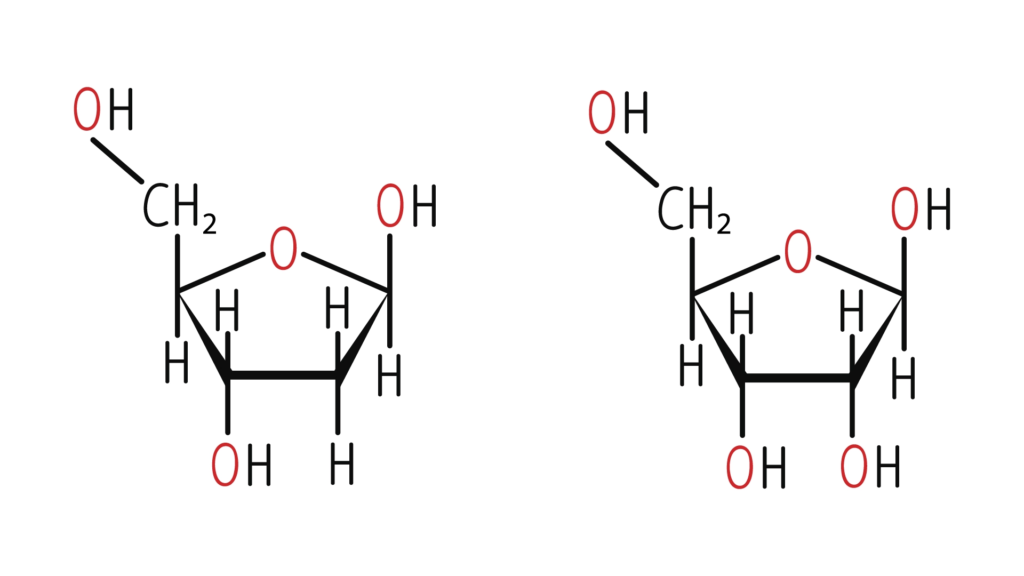
It is shown how the basic structures of deoxyribose and ribose sugars are different. Figure 2 shows the basic shapes of the sugars deoxyribose (on the left) and ribose (on the right). Thanks to Technology Networks.
Bases
The basic building blocks of genetic code are the nitrogen bases in DNA. It is very important for living things to have the right order and matching of these bases. This code is made up of four bases: adenine (A), thymine (T), guanine (G), and cytosine (C). As you can see, bases A and T and C and G are paired off in a double helix shape. RNA doesn’t have any thymine bases; instead, it has uracil bases (U), which pair with adenine.
Structure
The two-stranded structure of DNA is well known because of Francis Crick and James Watson’s (or should that be Rosalind Franklin’s?) DNA double helix. However, the single-stranded structure of RNA is not as well known.
RNA can form structures with two strands, like when mRNA and tRNA molecules pair up during translation. DNA polymers are thus far longer than RNA polymers. Comprising 46 chromosomes, each of which is a single lengthy DNA molecule, the human genome measures 2.3 metres in length. But RNA molecules are far shorter.
Location
All animal and plant cells, which are eukaryotic, store most of their DNA in the nucleus, where it is squished together into a shape called a chromosome4. The DNA can be easily saved and sent thanks to this squeezed format.The energy-producing mitochondria, which are located in the cytoplasm, the portion of the cell outside the nucleus, also contain some DNA.
Dispersed throughout various locations are the three types of RNA. Every mRNA molecule is copied from the matching DNA molecule in the nucleus before it leaves the nucleus and enters the cytoplasm. The pieces are then moved around the cell as needed by the cytoskeleton, which is the cell’s own transport system. tRNA is a free-moving molecule that goes through the cytoplasm, just like mRNA. It will look for amino acid subunits in the cytoplasm and bring them to the ribosome to be put together into proteins5 if it gets the right signal from the ribosome. As was already said, rRNA is found inside ribosomes. The nucleolus is part of the nucleus where ribosomes are made. They are thereafter transferred to the cytoplasm, where some of them are free to roam. Other cytoplasmic ribosomes are linked to the endoplasmic reticulum, a membrane-based structure that facilitates protein breakdown and extrusion from the cell5.
Different kinds of DNA and RNA
DNA most often takes the shape we talked about in this piece, but it’s not the only way it can be structured. There are different kinds of DNA and RNA that don’t follow the normal structures of these nucleic acids.
Z-DNA
The shape of DNA shown above and in any biology book you care to open has a right-handed helix. However, DNA molecules can also have left-handed helices. These are called Z-DNA. B-DNA is the name for canonical or “classic” DNA.
These are Z-DNA molecules:
- More narrow (18 A wide vs. 20 A wide B-DNA)
- Use a different repetition unit (two base pairs instead of one).
- Each base should have a different twist angle.
DNA handling enzymes, such as DNA polymerase, may make Z-DNA after they do their job. Z-DNA may help control gene expression.
A-DNA
Rosalind Franklin found A-DNA at the same time as B-DNA. It is a different type of DNA structure that often shows up when the molecule is dry. It’s possible for DNA crystals to be in an A-DNA form. It is shorter than B-DNA and has a different number of base pairs per turn and tilt. In recent years, a lot more has been learned about the cellular importance of A-DNA. It is now known that A-DNA plays many roles, such as
- Binding to DNA enzymes like polymerases—this change may make some atoms available for enzymes to work on.
- Protection from damage—A-DNA is much less likely to be damaged by ultraviolet rays, and bacteria that make spores have been seen to change their shape to an A-DNA form, which may be a protective change.
Three-part DNA
Some nucleobases, like pyrimidine or purine, can fill up the main grooves in normal B-DNA to make a triple-helix shape. In nature, this can happen, but researchers can also change DNA on purpose for research reasons.
Triplex-forming oligonucleotides (TFOs) can attach to normal two-stranded DNA. This can help change agents get to the right places in the genome. H-DNA is a triple-stranded DNA molecule that is found naturally and helps the gene change.
long noncoding RNA
Double-stranded RNA (dsRNA) makes up many viruses that afflict plants, animals, and humans. Among these are the Reoviridae, which include the rotaviruses and cause diseases like gastroenteritis. Strong immunogens, dsRNA molecules activate the immune system and then sever dsDNA to defend themselves. The group which identified the protein machinery enabling this reaction won the 2006 Nobel Prize in Physiology or Medicine. The development of gene-silencing RNAi technology followed from this.





